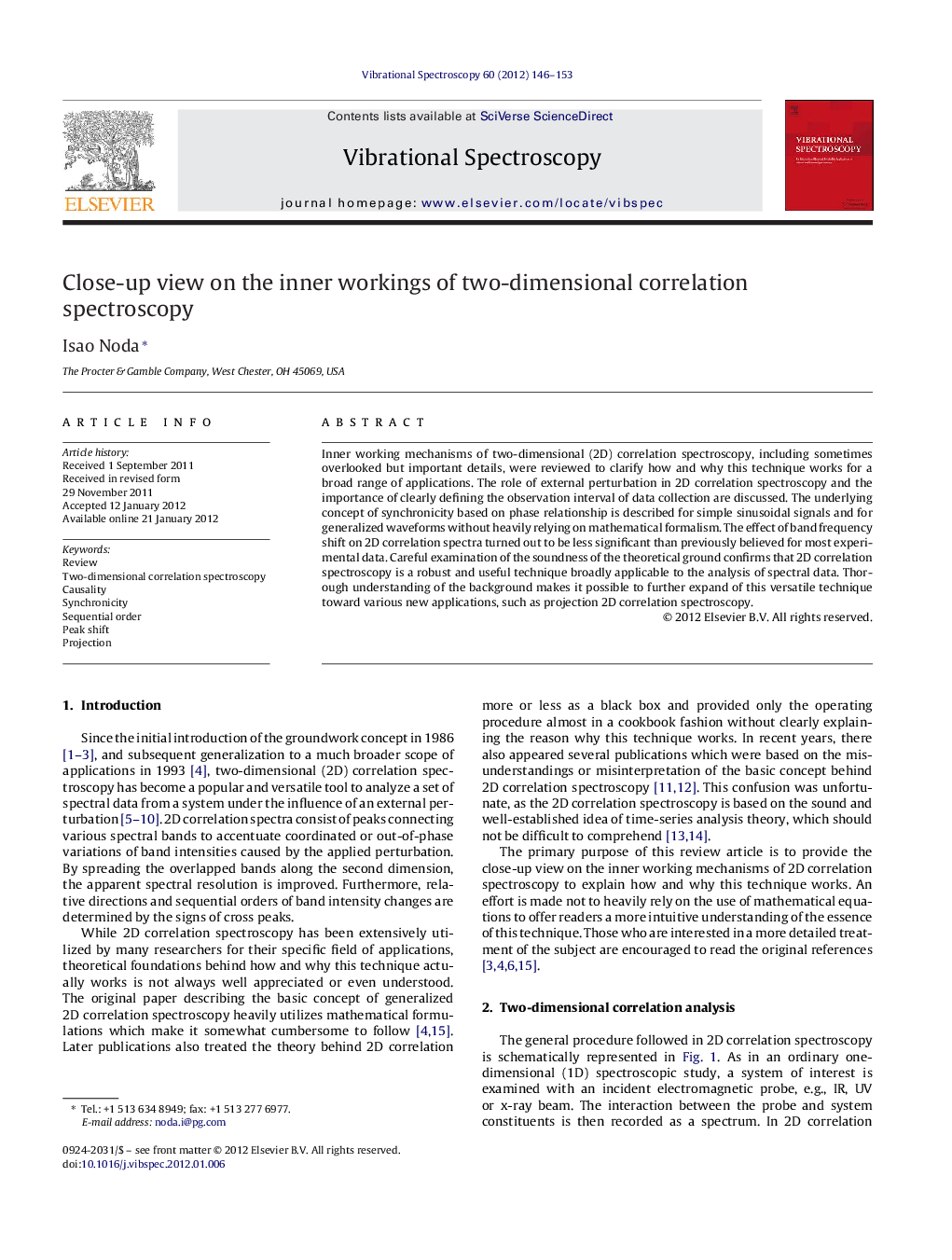| Article ID | Journal | Published Year | Pages | File Type |
|---|---|---|---|---|
| 1249621 | Vibrational Spectroscopy | 2012 | 8 Pages |
Inner working mechanisms of two-dimensional (2D) correlation spectroscopy, including sometimes overlooked but important details, were reviewed to clarify how and why this technique works for a broad range of applications. The role of external perturbation in 2D correlation spectroscopy and the importance of clearly defining the observation interval of data collection are discussed. The underlying concept of synchronicity based on phase relationship is described for simple sinusoidal signals and for generalized waveforms without heavily relying on mathematical formalism. The effect of band frequency shift on 2D correlation spectra turned out to be less significant than previously believed for most experimental data. Careful examination of the soundness of the theoretical ground confirms that 2D correlation spectroscopy is a robust and useful technique broadly applicable to the analysis of spectral data. Thorough understanding of the background makes it possible to further expand of this versatile technique toward various new applications, such as projection 2D correlation spectroscopy.
